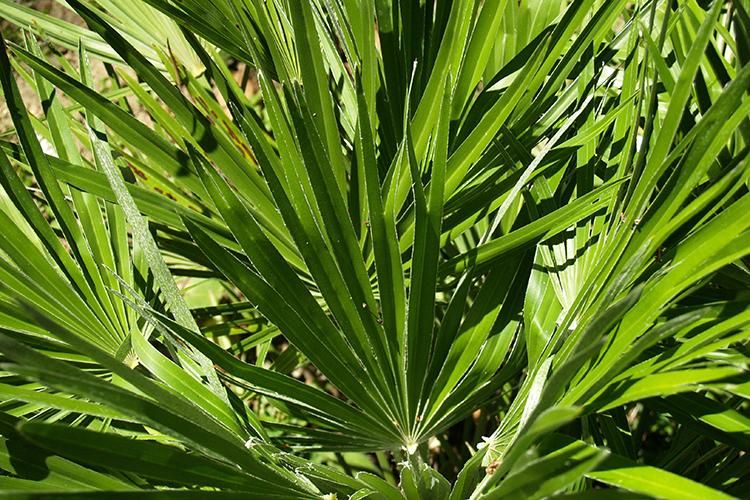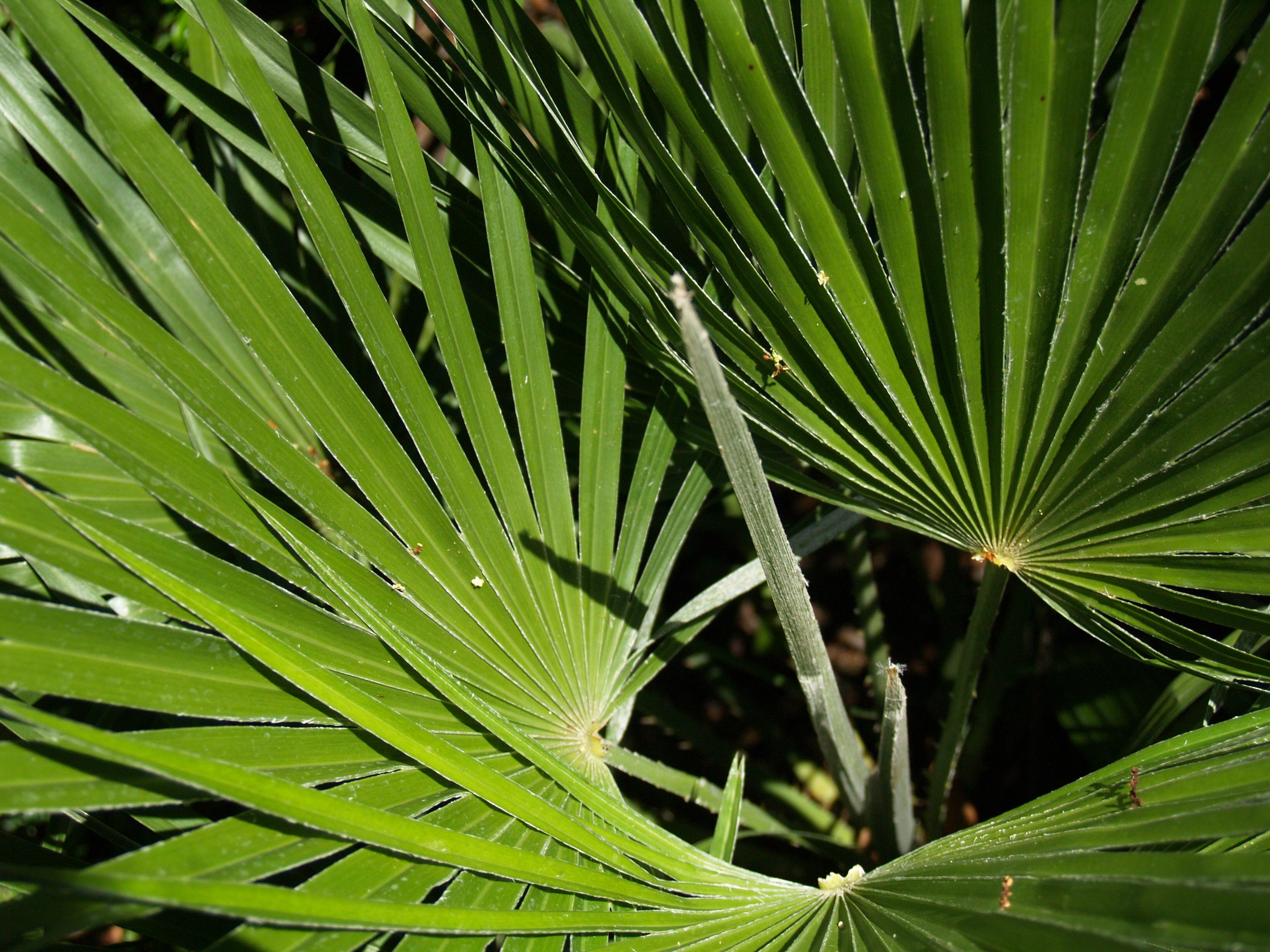
Mediterranean Dwarf Palm
Chamaerops humilis
Family and description
From the Arecaceae family, the Dwarf Palm is an evergreen shrub that, under ideal conditions, can reach a height of up to 4 m.
Its leaves are green, fan-shaped, cut into 20 narrow, sharp segments, with a broad petiole and rigid blade with a thorny-toothed margin.
The trunk is covered in grayish white fibres which are the remains of leaves from previous years.
It is a dioecious species – some plants produce male flowers and others produce female ones. The flowers are yellowish and appear in dense lateral panicles. Male flowers have stamens with short filaments.
Flowering occurs between March and May. Pollination occurs by the action of a Weevil (Derelomus chamaeropsis) and at times by wind.
The fruit is a 12 to 13 mm yellow berry that turns brown as it ripens, at the end of summer.
Origin and habitat
Endemic to the Mediterranean region, the Mediterranean Dwarf Palm originates from the western Mediterranean coast and can be found growing spontaneously in Portugal, Spain, France, Italy, Morocco and Tunisia. It appears spontaneously in Portugal along on the Algarve coast and in some areas of Lisbon and the Arrábida region. Integrating coastal plant formations of perennial bushes with Mastic trees and Mediterranean buckthorn, on all types of soils, it is the only palm species native to Continental Europe.
This species is representative of the Paleotropical Pre-Pliocene ancestral lineages.
It is one of the most resistant palm trees. It does not tolerate frost but resists fire as well as poor and rocky soils. Due to its resistance and ability to burst after burning, it is of high ecological value, preventing erosion. It is considered one of the most important species of the garrigues and macchias formations of the Mediterranean coast.
Uses and curiosities
Its increasing rarity in the wild is largely attributed to the rapid decline of its habitats, as a result of urban growth and other human activities. It is, however, grown as an ornamental plant in gardens with poorer soils, as it has adapted perfectly to the Mediterranean climate, with cool, wet winters and dry, hot summers.
The fruits contain butyric acid, which has an unpleasant odour. They are not edible but have traditionally been used in medicine as an astringent. Its seeds are often ingested by carnivores, which benefits the germination process and its dispersion.
The central buds of the fruit have traditionally been used in food in Andalusia.
The fibres of the remains of the leaves are used in the manufacture of mats, brushes and ropes.

